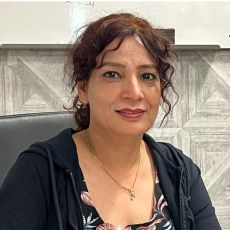
English as a Second Language (ESLCO)
Course Description
This course is designed to improve students’ accuracy in using English in classroom situations, for personal and career planning, and to understand the changing world around them. Students will study and interpret a range of texts and produce a variety of forms of writing. Activities will also help students to develop their oral presentation skills and acquire study skills (including note-taking and summarizing sills) that will enhance their ability to learn in all subjects.
For Ministry Guideline Click Here
| Units | Descriptions | Length (Approximately) |
|---|---|---|
| Unit 1 | Course Introduction, Short Stories and Poetry, Portfolio Expectations Students will have the opportunity to read many different stories and poems and to learn the literary elements. During this time, they will also have a chance to discuss these stories and poems in small groups. They will learn different reading strategies in order to help them understand the texts that they are reading. Two of the main teaching strategies for this unit is teacher read-aloud and think-aloud. |
28 hours |
| Unit 2 | Fiction and Non-Fiction Reading– about life in Canada This unit will focus on developing reading skills and awareness of a variety of text forms and conventions. Students will read, analyze and respond to a variety of texts. Students will understand the various types of media outlets. Students will focus on newspaper and magazine advertisements and the features of these forms of media texts |
21 hours |
| Unit 3 | Stories, Media, Songs and Art – Exploring Canada’s history and culture through the Arts. In this unit students will learn about Canada’s rich and diverse history, Canadian geography, citizenship.Students will understand Canadian diversity. Students will explore the Ontario school system and community resources and strategies for student success. |
28 hours |
| Unit 4 | Cultural Diversity This unit is primarily focused on developing oral and written communication skills. Students will complete a research report on Canadian culture and create a media presentation to present their findings to the class. |
29 hours |
| Final Culminating Task (10%)-2 Hrs Final Exam (20%)-2 Hrs |
4 hours | |
| Total | 110 hours | |
Overall Curriculum Expectations
By the end of the course, students will:
- demonstrate the ability to understand, interpret, and evaluate spoken English for a variety of purposes.
- use speaking skills and strategies to communicate in English for a variety of classroom and social purposes.
- correctly use the language structures appropriate for this level to communicate orally in English.
By the end of this course, students will:
- read and demonstrate understanding of a variety of texts for different purposes.
- use a variety of reading strategies throughout the reading process to extract meaning from texts.
- use a variety of strategies to build vocabulary.
- locate and extract relevant information from written and graphic texts for a variety of purposes.
By the end of this course, students will:
- write in a variety of forms for different purposes and audiences.
- organize ideas coherently in writing.
- correctly use the conventions of written English appropriate for this level, including grammar, usage, spelling, and punctuation.
- use the stages of the writing process.
By the end of this course, students will:
- use English and non-verbal communication strategies appropriately in a variety of social contexts.
- demonstrate an understanding of the rights and responsibilities of Canadian citizenship, and of the contributions of diverse groups to Canadian society.
- demonstrate knowledge of and adaptation to the Ontario education system.
- demonstrate an understanding of, interpret, and create a variety of media texts.
Assessment & Evaluation of student performance
Formative assessments are learning practices that provide important feedback to student progress. Examples include homework and quizzes.
Summative assessments form a foundation for final mark allotment at the end of the unit, term and final evaluation.
An achievement chart will be given to students at regular intervals and the purpose of the charts is to provide feedback to students in relation to content and performance strands.
| Knowledge and understanding | Communication | Thinking Inquiry and Problem solving | Application |
|---|---|---|---|
| 25% | 25% | 25% | 25% |
Unit Tests, Written assignments, presentations, Classroom Observations and Classroom conversations.










